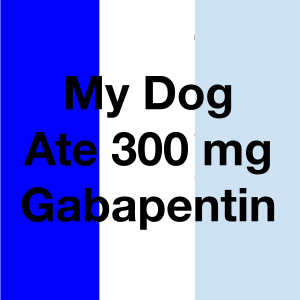
This article is for all of you dog owners who unfortunately have dogs who suffer from seizures.
And whose seizures are being managed by a specific medication, Phenobarbital.
The real focus of the article is specifically on the affect that taking this medication can have on your dog’s back legs.
And whether the affect is a temporary blip or whether this symptom will last for much longer.
And, beyond this, the post can be treated as a mini Phenobarbital 101 guide as I look at other side effects and the most important issues to consider when your dog starts taking Phenobarbital.
Let me start with the simple stuff first.
What is Phenobarbital?
Phenobarbital is essentially a barbiturate to treat seizures in dogs. It also serves as a sedative for other animals such as cats, ferrets, and even horses. It typically comes in brand names such as Luminal Sodium, Solfoton, Tedral. Phenobarbital can also have alternative generic names such as phenobarbitone, fenobarboital, phenmalum, phenobarbitalum, phenylethylbarbituric acid, phenylethylmalonylurea (pardon the long names).
In fact, Phenobarbital has been used as an anti-seizure medication for over 100 years (primarily for human use) since 1912. It is also known as one of the most inexpensive medications to combat seizures to date.
Now, it is used as a prescribed medication for dogs by vets, so ensure your tail-wagging pal takes them as instructed by the local vet. Phenobarbital is classified as off-label, which means it has not been officially approved by the FDA as a sedative. However, most drugs are typically prescribed as off-label, so as long as you follow your vet’s directions, it should work as intended.
How effective is Phenobarbital in treating seizures?
Phenobarbital relieves seizures by simply hampering and stabilizing neuron activity levels in your canine’s brain. This boosts GABA levels (a neurotransmitter that calms nerves) and tones down glutamate levels (a neurotransmitter that stimulates nerve cells). Up to this day, there is no other medication that can top what Phenobarbital does when it comes to its function and affordability.
How long does it take a dog to adjust to Phenobarbital?
In short, it depends on various factors such as body weight, along with the severity and frequency of your dog’s seizures. The best way to properly administer Phenobarbital and get it to function is by giving it on a regular basis, following your local vet’s prescription instructions. This means you should give them as long as the duration indicated and NOT stop the medication abruptly, as this should be slowly but gradually reduced. The medication may require a couple of weeks before it becomes fully effective. Still, generally, you should be able to see gradual improvements after a few doses.
What is the correct dosage for Phenobarbital?
Different dogs respond and absorb the medication at varied rates. Hence, dosage depends on a few factors, such as your dog’s weight and the severity and frequency of the seizures. After your vet takes into account all these factors, they will then prescribe a specified dosage for your beloved canine that normally lies between 1 and 2 mg of Phenobarbitol per pound body weight. In general, Phenobarbital should be administered every 12 hours or twice a day, and by every, we mean to try your best to not miss a single dose.
Phenobarbitol comes in either a tablet, capsule, paste, liquid solution, or chewable for whichever works best for your furry pal. You can give them before or after their regular meals. However, if your dog vomits when Phenobarbitol is given before a meal, then provide them with the medication after meals for future intakes.
Since Phenobarbital may have not-so-great implications to your furry friend’s liver, your vet may require regular blood testing once every 2 to 6 months, to monitor the liver function and avoid unwanted complications.
Note: Should you accidentally miss a dose, do NOT give your dog two doses in one go. Instead, skip the missed dose and carry on with the regularly scheduled doses.
What issues does Phenobarbital cause with back legs and why?
The main side effect of taking anti-seizure medication is ataxia, where your canine’s body essentially loses balance which causes incoordination of voluntary muscle movements, particularly the weakness or the loss of control of the hind legs. This is often indicated when you see your furry friend wobble, trip, fall, lack coordination, or collapse.
Ataxia is commonly experienced in the early stages of giving your dog Phenobarbital or when the dosage gets boosted, as the drug causes increased ataxia. But don’t push the panic button just yet! As your dog’s body adjusts to the regular intake of the medication, the ataxia should wear off over time.
This is why taking extra care of them during the early stages of the medication is the utmost priority for all you responsible and caring dog owners, especially when they climb stairs or walk on slippery surfaces. If your home happens to have slippery surfaces such as tiled or hardwood floors, you may try adding rugs to give your furry pal some traction.
At this time, it’s vital that you remain patient and bear the strength to support your furry companion as they try to regain control.
Note: If you see very little to no signs of improvement of your dog from ataxia, we highly recommend seeking professional medical advice from your local vet for further diagnosis and possible treatment.
What are some other side effects of Phenobarbital?
Though Phenobarbital has been a long-used anti-seizure medication, it does have side effects that come along with it for fellow canines. Here are other side effects you should be aware of:
- Anxiety (not pretty, even for us, humans)
- Agitation
- Increased thirst, urination, and appetite
- Incoordination (may indicate a dose too high)
- Decreased red blood cells (don’t worry, this is a less common side effect)
- Liver dysfunction (super rare, but always keep an eye out for symptoms such as yellowing of the skin, vomiting, anorexia, and skin ulcers)
Note: If your dog has underlying medical condiitons such as kidney inflammation/infection, allergies, severe breathing issues, or severe liver diseases, do NOT use phenobarbitol. Also, if your dog is anemic, dehydrated, pregnant, or lactating, please consult with your vet on how to safely administer the medication.
Is there an alternative to Phenobarbital?
So far, phenobarbitol is the most commonly used and effective medication to date when it comes to treating seizures in dogs, despite its not-so-favorable side effects. But, just in case phenobarbitol ran out or if you want simply want a second or third option, then we’re here to help you with just that. Here are some of the alternatives to Phenobarbitol you can consider:
Potassium Bromide
This medication is effective in some dogs, either when used alongside Phenobarbitol or on its own. Like Phenobarbitol, it does cause incoordination, weakness, and in some cases, skin problems (yikes!). Other distinct side effects include vomiting or nauseousness.
Note: If your dog happens to have kidney issues, this medication may not be suitable as your dog may not be able to excrete the drug and may cause toxins to accumulate in the blood.
Diazepam
Diazepam is a known medication to treat anxiety, can also be effective in helping your furry pup manage seizures in some breeds. Some common side effects include drowsiness, disorientation, and incoordination (just like Phenobarbitol).
What are the other major causes of back leg weaknesses in dogs?
Anti-seizure medications are just one of the many reasons why your tail-wagging pal may experience back or hind leg weakness. This is why carefully assessing these symptoms is crucial for you and your vet to get your canine the correct treatment.
Some apparent causes of hind leg weakness include age (due to degeneration of joints and muscles over the dog years). Here are some of these specific causes of back leg weakness in dogs:
- Degenerative myelopathy
- Injury (trauma can cause weakened muscles and tissues)
- Intervertebral disc disease
- Diabetes (not a sweet thing to have)
- Toxic poisoning
- And more.
As you can see, this symptom has more than meets the eye. So it is always wise to ensure you know the exact cause before jumping to conclusions about getting certain medications.
If your dog experiences back leg weakness, indicated by incoordination, tripping, and wobbling, we recommend you take them to the vet as soon as you can to get checked up. Ensure you let your vet know every single detail, including current medications, changes in appetite and behavior, as well as any medical history on back leg weakness.
How should you care for a dog with weak back legs?
While there are various causes of weak back legs, such as age or diseases like arthritis, caring for dogs with weak back legs is the best way to help them with their recovery process. One of the best ways to care for them and prevent future hind leg weaknesses is incorporating a healthy meal plan for your furry pal.
An ideal diet for dogs with weak hind legs is to include a fully balanced diet packed with plenty of omega 3 and omega 6 fatty acids, calcium, and vitamin B1, to help strengthen their bones and muscles. As always, be sure to consult with your local vet on the best diet you want to include and ones you want to avoid, especially if your dog has underlying health conditions such as diabetes, for instance.
Another great way is by regular and proper exercise. Taking them out on walks to the park at a young age can go a long way to developing an active lifestyle, which may benefit them in their senior years with strong hind legs than dogs who don’t exercise as much.





